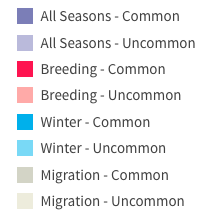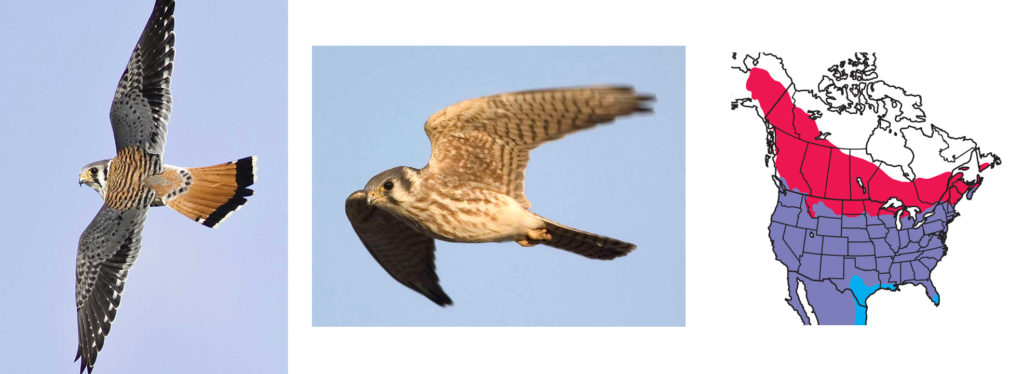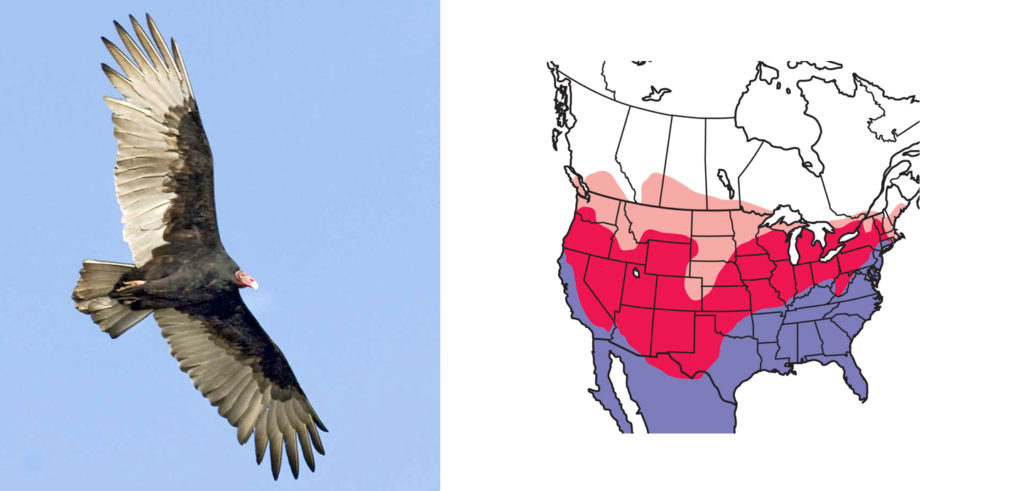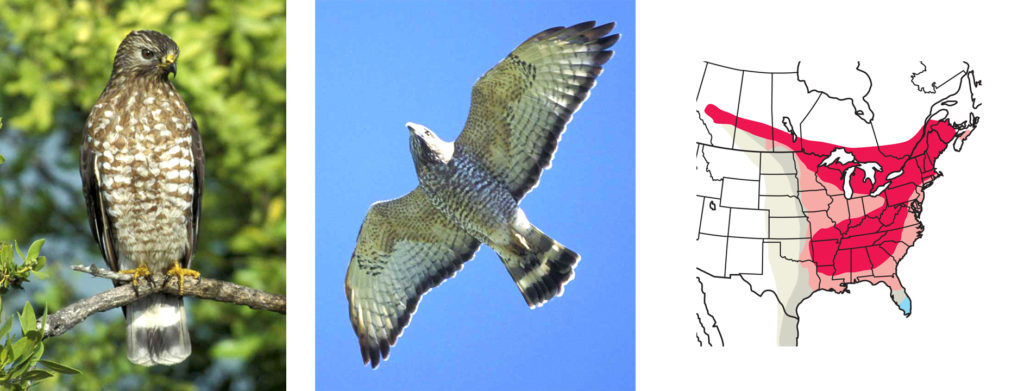 There are 34 diurnal (active by day) raptor species that can be seen regularly throughout North America (this includes vultures, which are not true ‘raptors’). However, here at Rockfish Gap Hawk Watch, we regularly see 15 species migrating in the fall (including 2 vultures) as well as 3 other uncommon species. Below is a brief introduction to our raptors (images from the Audubon Bird Guide).
There are 34 diurnal (active by day) raptor species that can be seen regularly throughout North America (this includes vultures, which are not true ‘raptors’). However, here at Rockfish Gap Hawk Watch, we regularly see 15 species migrating in the fall (including 2 vultures) as well as 3 other uncommon species. Below is a brief introduction to our raptors (images from the Audubon Bird Guide).

Bald Eagle
L 27-35″, WS 71-96″, WT 152oz
Migration: Many southern and coastal adults are permanent residents. Birds from far northern interior migrate south in winter.

Golden Eagle
L 28-35″, WS 72-89″, WT 160oz
Migration: Northern birds are migratory, mostly moving late in fall and early in spring. In western United States and southwestern Canada, many adults may be permanent residents, but young birds may migrate south in fall.
Broad-winged Hawk (a buteo)
L 15″, WS 34″, WT 14oz
Migration: A long-distance migrant, most going to South America for the winter. Migrates in flocks. Birds from throughout the east travel southwest or south to go around, not across, the Gulf of Mexico.

Red-shouldered Hawk (a buteo)
L 17-22″, WS 43-56″, WT 38.5oz
Migration: Northern Red-tails may migrate far to the south, while many at central or southern latitudes (especially adults) are permanent residents. Most migration is relatively late in fall and early in spring.

Red-tailed Hawk (a buteo)
L 15-19″, WS 37-42″, WT 22.5oz
Migration: Mostly a permanent resident in west and south; northern birds migrate, but do not travel far. Some movement in winter as far south as central Mexico.

Rough-legged Hawk (a buteo)
L 18-23″, WS 48-56″, WT 35.2oz
Migration: Rare at Rockfish Gap. Migrates relatively late in fall and early in spring. Numbers appearing south of Canada are quite variable from one winter to the next.
American Kestral (a falcon)
L 9″, WS 22″, WT 4.1oz
Migration: Many kestrels in southern or middle latitudes are permanent residents, while northern birds may migrate far to the south. Young birds may tend to migrate farther than adults.

Merlin (a falcon)
L 9-12″, WS 21-27″, WT 6.5oz
Migration: Most Merlins migrate, some northern birds reaching South America. Those of Pacific Northwest (race suckleyi) are mostly permanent residents.

Peregrine Falcon (a falcon)
L 14-18″, WS 37-46″, WT 25.6oz
Migration: Northern breeders are long-distance migrants, many going to South America. Migrants often travel along coastlines and regularly occur well out at sea. Permanent resident on northwest coast and in some temperate regions.

Sharp-shinned Hawk (an accipiter)
L 9-13″, WS 20-26″, WT 5oz
Migration: Some in northwest may be permanent residents, but most are migratory. Large numbers may concentrate at some points along coasts or ridges during migration, especially in certain weather conditions, but the birds are traveling as individuals, not in flocks.

Cooper’s Hawk (an accipiter)
L 14-19″, WS 28-34″, WT 16oz
Migration: Found all year in much of range, but northernmost breeders move south for winter. Especially in fall, migrants often concentrate along ridges and coastlines in certain weather conditions.

Northern Goshawk (an accipiter)
L 18-24″, WS 38-45″, WT 33.6oz
Migration: Uncommon at Rockfish Gap. Some may remain through winter in north woods, others (especially young birds) move south. Sometimes big invasions move south of breeding range, possibly when prey is scarce in north. Migrates relatively late in fall, early in spring.

Osprey
L 21-26″, WS 59-67″, WT 56oz
Migration: Some are permanent residents in southern Florida; migratory elsewhere. Migrants travel singly, not in flocks, often following coastlines, lake shores, rivers, or mountain ridges.

Northern Harrier
L 16-20″, WS 38-48″, WT 15oz
Migration: Some southern birds may be permanent residents, but northern ones migrate. At least in North America, always migrates singly. Time of migration is spread out over long season in both spring and fall.

Mississippi Kite
L 13-15″, WS 29-33″, WT 10oz
Migration: Uncommon at Rockfish Gap but we’re seeing more each year now. A long-distance migrant, wintering in southern South America. Migrates in flocks; sometimes seen in very large concentrations in Texas and Mexico.

Turkey Vulture
L 24-28″, WS 63-71″, WT 64oz
Migration: Present year-round in much of southern United States, but northern birds migrate long distances, some reaching South America. Migrates in flocks, and may travel long distances without feeding. Not counted at Rockfish Gap due to difficulty in determining true migrants.

Black Vulture
L 24-28″, WS 55-63″, WT 70oz
Migration: Some withdraw in winter from northern part of range (although increasing numbers now spend the winter in the north, usually with roosts of Turkey Vultures). Strays may wander north of breeding range at any season, especially late summer. Not counted at Rockfish Gap due to difficulty in determining true migrants.

